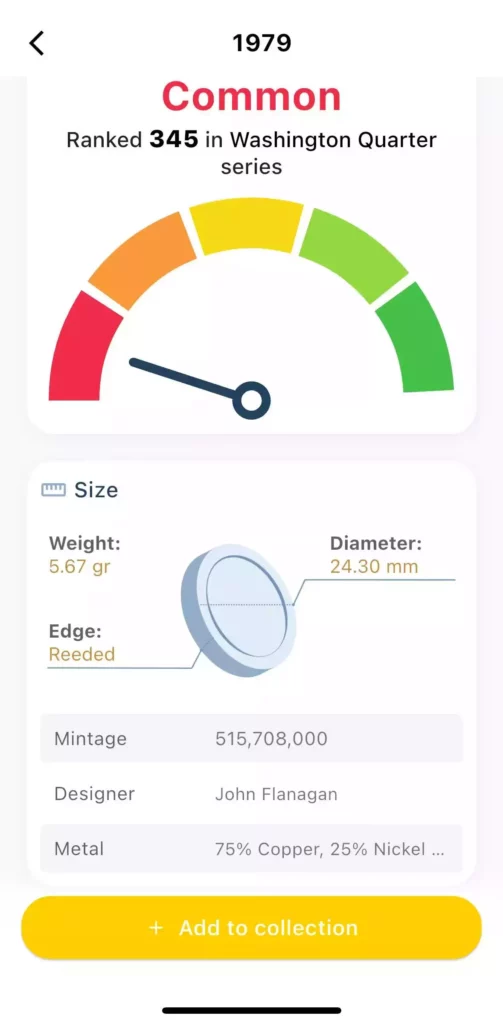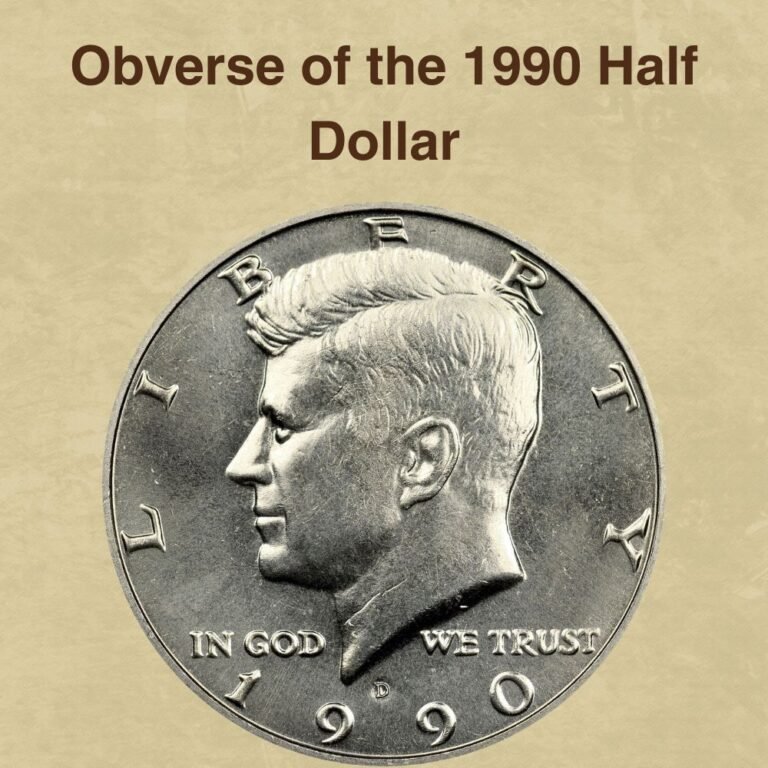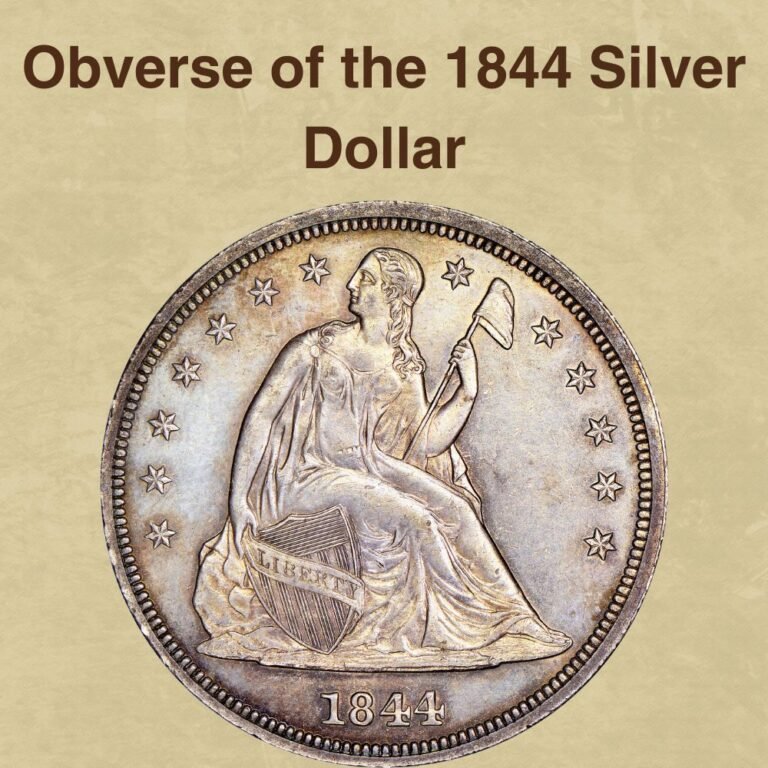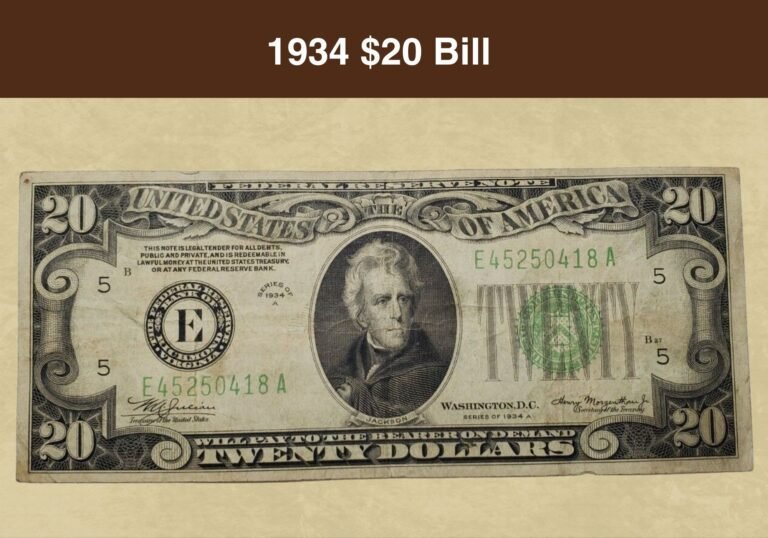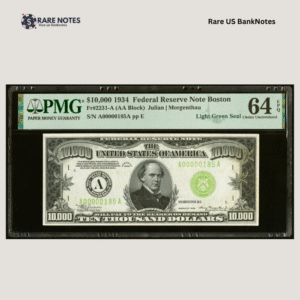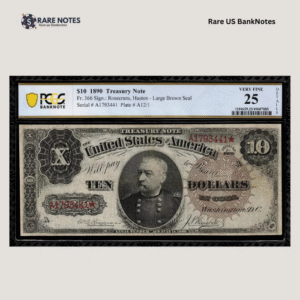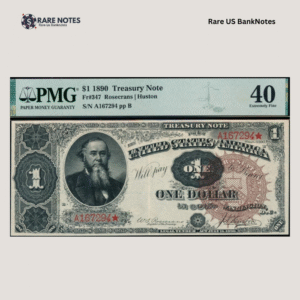Looking to understand your 1979 quarter’s worth? You’re not alone—coin values fluctuate constantly, and what was worth face value yesterday could be worth hundreds today.
The 1979 quarter represents an interesting case study in modern coinage, with values ranging from face value to several hundred dollars depending on condition and mint mark. While most 1979 quarters remain common circulation finds, certain varieties and high-grade examples are quietly gaining collector attention as the numismatic market evolves.
Here’s everything you need to know about evaluating your 1979 quarter before the market catches up.
1979 Quarter Value By Variety
This comprehensive value chart displays current market pricing for all 1979 Quarter varieties across different condition grades, illustrating how mint marks and proof types significantly impact collector values in today’s numismatic marketplace.
1979 Quarter Value Chart
| TYPE | GOOD | FINE | AU | MS | PR |
|---|---|---|---|---|---|
| 1979 No Mint Mark Quarter Value | — | $1 | $1 | $683 | — |
| 1979 D Quarter Value | — | $1 | $1 | $570 | — |
| 1979 S Type 1 DCAM Quarter Value | — | — | — | — | $7 |
| 1979 S Type 2 DCAM Quarter Value | — | — | — | — | $9 |
Tip: Use our CoinValueChecker App for real-time variety identification and current market values.
1979 Quarter Market Trend
Market Interest Trend Chart – 1979 Quarter
The 1979 Quarter has demonstrated remarkable resilience in the collectibles market over the past decade, revealing a fascinating story of sustained collector interest with several notable momentum shifts that reflect broader numismatic market dynamics.
What’s particularly striking is the coin’s ability to maintain consistent appeal despite market volatility, with the chart showing periods of steady growth punctuated by significant surges in collector attention.
The dramatic acceleration in recent years suggests that savvy investors have recognized the inherent value proposition of this late-1970s quarter, moving beyond its reputation as a common circulation find.
Multiple peaks throughout the timeline demonstrate recurring cycles of discovery and rediscovery by different collector demographics, indicating that 1979 quarters aren’t just riding temporary waves of nostalgia—they’re establishing themselves as serious contenders in the modern coin space.
The sustained upward trajectory becomes even more impressive when viewed against the backdrop of changing collector preferences and market dynamics.This sustained performance becomes even more compelling when examined alongside other classic American coins.
To see how the 1979 Quarter stacks up against the market’s most coveted pieces, check out our comprehensive US Coin Market Trend Ranking (Top 100), where this quarter’s staying power becomes truly apparent.
History of the 1979 Quarter
The 1979 quarter emerged during a pivotal moment in American economic history, as the nation grappled with stagflation, energy crises, and mounting inflation that would define the late Carter era.
While Americans waited in gas lines and watched interest rates soar, the U.S. Mint quietly produced over 860 million quarters across three facilities, desperately trying to meet circulation demands in an economy where coins were disappearing into hoarding and vending machines.
What makes the 1979 quarter fascinating isn’t just its economic backdrop, but how it represents the maturation of modern copper-nickel coinage technology.
By 1979, the Mint had perfected the clad composition introduced in 1965, producing quarters with consistent strikes and improved die life. The Philadelphia, Denver, and San Francisco facilities struck business strikes and proofs with remarkable technical precision compared to the experimental years of the late 1960s.
The real story lies in what collectors missed at the time. While numismatists focused on silver coins and classic dates, 1979 quarters were entering circulation by the hundreds of millions, most destined for decades of heavy use.
Today, as vintage coin collecting explodes and younger collectors embrace post-silver issues, these once-overlooked quarters are being rediscovered—especially high-grade examples that somehow escaped the circulation grinder of the early 1980s recession.
Is your 1979 Quarter rare?
1979 No Mint Mark Quarter
1979-D Quarter
1979-S Type 1 DCAM Quarter
1979-S Type 2 DCAM Quarter
The market activity rankings for 1979 quarter varieties reveal consistent collector interest across all major types, with most varieties maintaining steady activity scores of 10 indicating reliable trading volume despite their common classification.
The Philadelphia No Mint Mark and Denver quarters rank between 345th and 350th place within the broader Washington Quarter series, reflecting their accessibility while maintaining legitimate numismatic standing.
Notably, the 1979-S Type 2 DCAM variety shows slightly elevated activity with a score of 11, ranking 337th and demonstrating increased collector pursuit of this proof variation. All varieties maintain “Common” status, which aligns with their substantial original mintages and widespread availability from this high-production year.
The close ranking positions suggest that collectors view these varieties as equally accessible entry points into late-1970s quarter collecting, making them ideal for beginners seeking authentic numismatic experiences without premium pricing.
For collectors seeking to identify which Washington quarters offer the greatest rarity and investment potential beyond these common but historically interesting dates, exploring the Washington Quarter Key Dates (Rarity Ranking) reveals the most sought-after specimens throughout the entire series.
Use our CoinValueChecker App to instantly assess the rarity ranking and market activity level of any quarter in your collection.

Key Features of the 1979 Quarter
Let’s now look at the features of the 1979 quarter. Understanding these attributes will come in handy when identifying 1979 quarters worth money.
The Obverse of the 1979 Quarter

The obverse is the top side of a coin, also known as the head.
On a 1979 quarter, the left-facing profile of George Washington takes up most of the space on the obverse. The president looks straight ahead, his hair styled in a low ponytail tied with a ribbon.
The word LIBERTY appears at the top around the coin’s inner rim, while the year date, 1979, is shown at the bottom.
You will see the motto, IN GOD WE TRUST impressed on the coin’s surface on the left side, positioned in line with Washington’s neck area.
The Reverse of the 1979 Quarter

When you turn over the coin on the reverse or tail side, you are met with a more complex design. The major image is a left-facing American eagle with its wings spread out wide.
The bird is perched on a bundle of arrows representing strength and readiness to defend. Below are olive branches tied together, symbolizing peace and unity.
Our country’s name appears boldly at the top along the inner rim, followed by the motto E PLURIBUS UNUM, which means “Out of many, one.”
The coin’s denomination, QUARTER DOLLAR, is shown at the bottom along the inner rim.
Other Features of the 1979 Quarter
Business strike 1979 Washington quarters are made of a pure copper center and an outer clad comprising 75% copper and 25% nickel.
This coin measures 24.30 millimeters in diameter and weighs 5.67 grams. The 1979 clad quarter features a reeded edge with denticles around the rim.
The mints in Philadelphia, Denver and San Francisco struck Washington quarters in 1979. You can identify where a quarter was struck by the mint mark P, D, or S; the mint mark appears on the obverse next to the President’s ponytail ribbon.
1979 Quarter Mintage & Survival Data
1979 Quarter Mintage & Survival Chart
Survival Distribution
| Type | Mintage | Survival | Survival Rate |
|---|---|---|---|
| No Mint | 515,708,000 | 180,497,800 | 35% |
| D | 489,789,780 | 171,426,423 | 35% |
| S Type 1 DCAM | unknown | unknown | unknown |
| S Type 2 DCAM | unknown | unknown | unknown |
The 1979 quarter mintage and survival analysis reveals compelling preservation patterns during this high-production year in American coinage history.
Philadelphia and Denver business strikes demonstrate remarkably consistent survival characteristics, both maintaining identical 35% survival rates despite their massive original mintages of over 515 million and 489 million pieces respectively. This uniform survival rate suggests similar circulation patterns and preservation habits during the late Carter era, when economic uncertainty led to widespread coin hoarding and usage.
The combined business strike production exceeded one billion quarters, yet only about 352 million examples remain in collectible condition today, highlighting the extensive circulation these coins endured during the economic turbulence of 1979-1981.
The San Francisco proof varieties show incomplete survival data in current records, reflecting the specialized nature of these collector-focused specimens and ongoing research into their precise preservation statistics. The survival distribution clearly illustrates the dominance of business strikes in today’s market availability.
For comprehensive survival analysis across all Washington quarter issues and to discover which dates demonstrate the most favorable preservation characteristics throughout different economic periods, explore the Washington Quarter Survival Ranking (Top 100) for detailed mintage-to-survival relationships across the entire series.
1979 Quarter Grading
Grading separates the face-value quarters from the valuable ones—and with 1979 quarters, condition is everything.
Most circulated examples grade between Good-4 and Very Fine-20, showing honest wear from late-1970s commerce during an era of economic uncertainty when coins saw heavy usage.
The sweet spot for collectors? XF-40 to AU-55 grades, where you’ll find coins with sharp details but prices that haven’t reached premium levels yet. Here’s the insider move: while everyone chases MS-65 examples at inflated prices, AU-58 coins often look nearly identical for a fraction of the cost.
Key areas to examine include Washington’s hair details, the eagle’s breast feathers, and overall surface preservation. High contact points like Washington’s cheek, ear area, and the eagle’s wing tips show wear first in circulated examples. For mint state designation, look for complete luster and no trace of circulation wear under focused lighting.
Use our CoinValueChecker App to instantly analyze wear patterns and get an accurate grade assessment without squinting through a loupe.

Master the fundamentals with our complete guide on How to Grade Washington Quarters and spot undergraded gems before the market recognizes their true potential.
1979 Quarter Guides
1979 Quarter Coin Categories:
- 1979 No Mint Mark Quarter (Philadelphia)
- 1979-D Quarter (Denver)
- 1979-S Type 1 D CAMQuarter (San Francisco)
- 1979-S Type 2 D CAMQuarter (San Francisco)
The 1979 Washington Quarter series encompasses four distinct categories, reflecting the U.S. Mint’s impressive production capacity during a period of economic turbulence and high inflation.
Philadelphia struck over 515 million business strike quarters without mint marks, while Denver contributed approximately 489 million pieces bearing the “D” designation, creating a combined circulation total exceeding one billion coins to meet demands during the Carter-era economic crisis. San Francisco focused exclusively on collector-quality proof production, striking two distinct types with subtle but important differences that variety specialists actively pursue.
While business strikes remain common due to massive mintages, the Type 1 and Type 2 proof varieties offer collecting opportunities across different budget levels, providing options from affordable proof specimens to premium deep cameo examples for serious numismatists.
1979 No Mint Mark Quarter Value

The 1979 No Mint Mark Quarter represents Philadelphia’s massive production response during one of America’s most challenging economic periods, with over 515 million pieces struck to combat coin shortages amid Carter-era stagflation.
This coin showcases the Philadelphia Mint’s role as the nation’s primary quarter producer during an era when Americans were hoarding coins due to economic uncertainty and rising inflation. While extremely common due to extensive circulation during the early 1980s recession, the 1979-P quarter’s historical significance lies in representing the peak of late-1970s minting technology and the Mint’s struggle to maintain adequate circulation during economic turmoil.
Most examples entered immediate circulation and saw heavy use as the economy declined, making gem-quality specimens surprisingly scarce. The coin’s importance extends beyond its abundance, marking a period when the U.S. Mint operated under intense pressure to supply commerce during unprecedented economic challenges.
1979 No Mint Mark Quarter Price/Grade Chart
Price by 1-70 Grade (Latest Auction Records Included)


